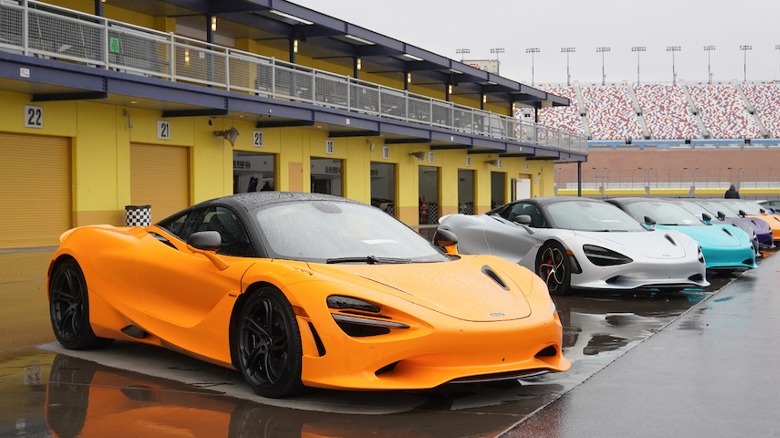Weather prevented anyone from trying out the Spider’s retracting roof, the nifty rolling burnout feature, or launch control over the course of the day. And nobody truly felt the aero gains of the 750S’s revised bodywork, either, even while watching the active rear wing flip up at every quick chop of throttle or braking. “No comment” should be the official response when anyone asks about top speeds achieved on public roads that day.
But as much as a new McLaren deserves its day in the sun, this wet ride showed exactly how much trust this newly modernized supercar can handle. McLaren always seemed akin to Lotus, in certain regards, just MORE—more of everything, with all caps. Firmer-than-firm brakes, so unique and racy, plus steering almost as close to unassisted as possible, always set McLarens apart from the competition. The 750S arrives in much more malleable form, thanks to updates to brake boosting and steering assist and drive modes, but at what cost? Similar to the new Lotus Emira, increased approachability comes at the risk of diminishing some of the radical edge that makes supercars so enthralling.
Pricing for the 750S coupe starts at $324,000 and a Spider runs about 20 grand more. And rest assured that McLaren will always keep building more expensive, more aggressive LT models for the speed freaks willing to sacrifice comfort in the name of hardcore performance. For now, the 750S delivers a solid statement from Woking about the advantages that modern tech affords supercar manufacturers aiming to attract a broader swath of potential customers. More sales means more money means more racing means more models means, simply put, more McLaren, something every supercar enthusiast—regardless of buying power—can agree the world definitely needs.


